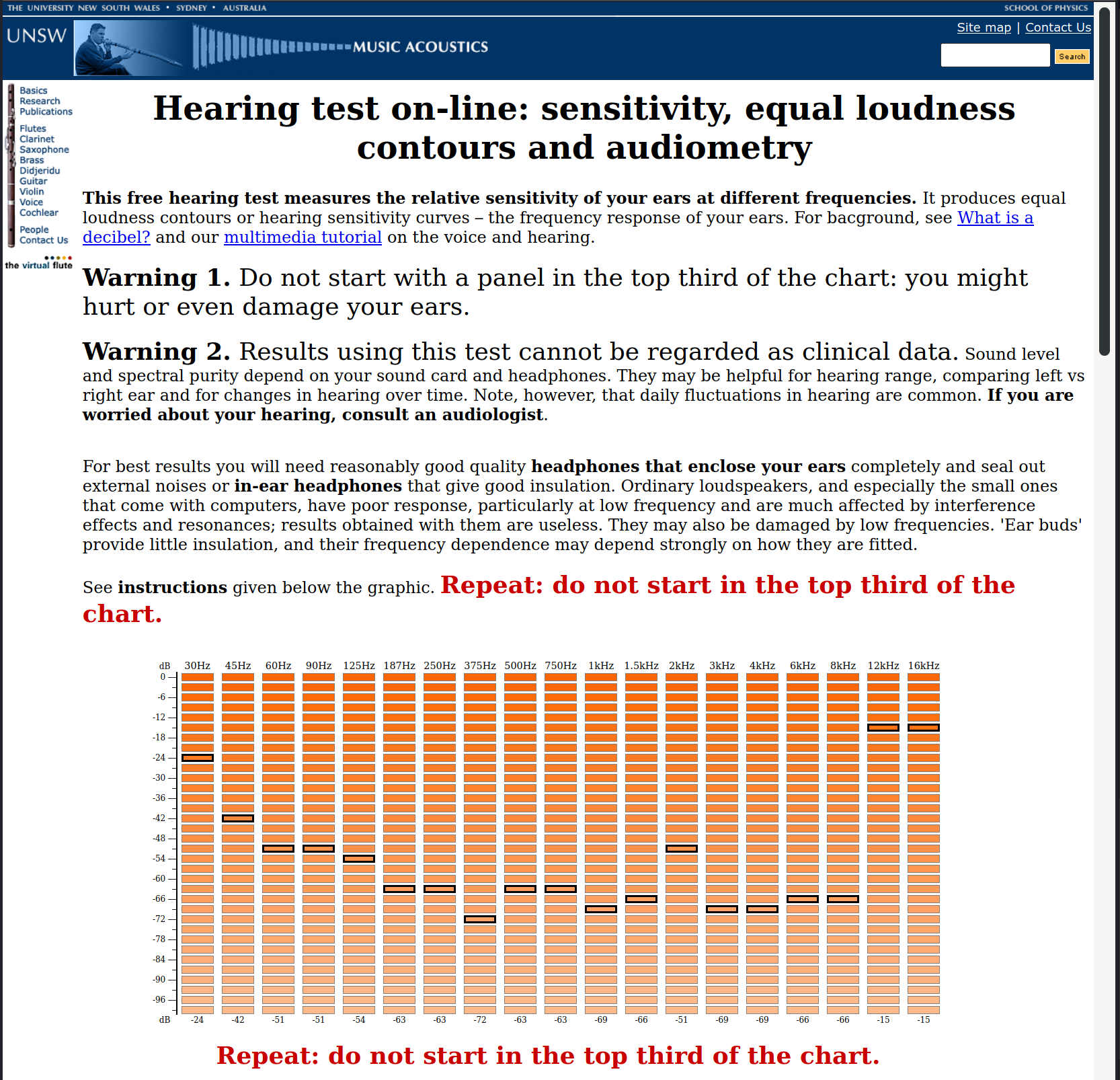I’ve now mixed the audio for the pre-title teaser and Act I of “No Children in Space” for the animatic version. Although it sounded fine on my studio earphones, I found it didn’t sound so good on a TV. I realized I was mixing it too “hot” — meaning the dynamic range was too high. So I did a little research, and now I’m mixing a more reasonable version.
Fixing Sound Levels (Dynamic Range)
The first problem was that I had not adjusted the level on the title music, so it was pretty much filling the full digital scale (i.e. the peaks are at 0 dBFS or “decibels from the full digital scale”), just like it would on an Audio CD. But this is not the norm for television. Normally, TV audio is mixed somewhat lower.
For television, you want a narrower dynamic range (which is the difference between the loudest and the quietest sounds on the soundtrack, expressed in decibels) than you do for theatrical movies. That’s because people usually don’t listen to television in an extremely quiet room. A typical living room is much louder than a typical theater auditorium. So very quiet sounds will be lost. On the high end, very loud sounds may be disruptive and in any case, they can cause distortion on the smaller amplifiers used with home televisions.
Viewing on the computer has similar (and possibly worse) limitations.
I had been simply mixing “by ear” using my studio monitor earphones and computer sound card. They’re pretty good equipment and they isolate the environment pretty well. I found a nifty website tool for estimating frequency response of your soundcard + earphones + ears combination. It shows me that my hearing is still pretty good and that the soundcard and earphones work over a wide frequency range, though there may be some problems on the very high-frequency end. The down side of this, though, is that stuff that sounds good over my earphones may not sound so good on a TV set.
I found that in fact, I had been mixing with a dynamic range of about 70 dB which is probably okay for theatrical use, but is way too hot for home-listening on a TV. I also had very inconsistent levels from scene to scene. But what levels should I use?
I did some research online, but although there are plenty of discussions of loudness levels on online forums, I found the information more confusing than useful. So instead I decided to learn by example — I loaded part of the soundtrack from a TV series I like (“Buffy the Vampire Slayer” as it happens), and took a look at what levels they used. I didn’t use a formal measurement process, but just estimated by looking at the “Waveform (dB)” scale in Audacity. Here’s what I saw:
| Type of Sound | Min | Average | Max |
|---|---|---|---|
| Title/Hero Track Music | -12 | -18 | -21 |
| Dialog and Effects | -18 | -24 | -27 |
| Background Music | -27 | -30 | -36 |
| Ambiance | -39 | -45 | -48 |
The absolute peaks were at -8 dBFS.
This seemed like a pretty good starting point, although I didn’t see much point in wasting the top 8 dB of scale space (thus throwing away some resolution). So I decided to adjust this scale up to use more of the digital scale. I’m currently working on adjusting my levels to match this plan:
| Type of Sound | Target Level |
|---|---|
| Absolute Peaks | -0.1 dBFS |
| Loudest Sounds | -6 dBFS |
| Title/Hero Track Music | -10 dBFS |
| Dialog, Effects, Music-only | -16 dBFS |
| Background Music | -24 dBFS |
| Ambiance | -36 dBFS |
So far, I’ve only applied this adjustment to a couple of scenes.
Mixing Progress for “No Children in Space” Animatic
As for the sound mixing in general, I have finished the before-title teaser and all of “Act I” which is about 30 minutes in. This was about halfway through the episode as originally conceived, although with all of the edits, I’m not so sure anymore. The episode has probably grown a bit in length from the original 55 minute plan.
I hope to get through Act II sometime this week, and finish up the entire animatic. I will then be going through and improving some of the dodgier artwork to make what’s going on a little clearer to people other than myself. I also have to make sure that I’ve met all of the attribution requirements and haven’t accidentally used non-free images
in my mock-up shots (some of them are photo-collages rather than sketches).


